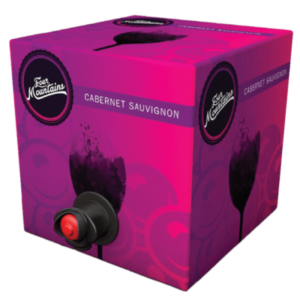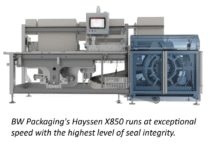Alco-bev companies follow attractive packaging formats to give their product eye-catching look that draws customers’ attention. Innovation in the alco-bev packaging industry has been driven by a multitude of modern expectations of what today’s bottled products should look like, as well as how they should be made. Beverage packagers are finding new ways of producing better bottles in better ways to improve convenience, sustainability, shelf-life, or aesthetics. In addition, many new packaging formats are used for alcoholic beverages, including ceramic glass bottles, whiskey pouches, bag-in-box, bag-in-tube, metal cans, and more.
As wineries or brewers first launch their operations or begin to grow larger, they have the option to either buy their own filling machines or to opt for rented filling lines or contract-filling solutions. Both these options have their advantages and disadvantages; however, having own filling line can give greater flexibility and control over the bottling process.
The process of finding the right filling machinery is not easy. It can leave those new to the packaging industry scratching their head. The selection of right kind of filling machine, depends on several different factors, including what the manufacturer wants to accomplish. Here are a few points that can help to guide manufacturers to find the best filling solution for their unique packaging project.
Type of the product to be filled
When discussing filling machines, one of the first questions will be what product is being bottled. Different types of filling machines can handle different liquid viscosities; for example, wines and spirits have varying filling requirements, depending on their viscosity and packaging.
Type of container used for packaging
In some instances, the bottle or container being used for filling helps to make ideal choice for some projects. For example, a packaging professional using a clear container may want to take advantage of the overflow filler, which will fill each container to the same level regardless of small inconsistencies in the interior volume of the container. While on the other side, many products may use large containers or small containers, which in turn can affect the machine or the nozzles that will be used for packaging. Therefore, in addition to the product itself, the package being used can help to determine which filler will best suit a given project.
Through smart design and technological advances, alco-bev packagers are improving traceability, convenience, sustainability, and more. Here are some examples of the latest trends in the alcohol packaging that have been pushing the packaging industry forward.
- Bag-in-box – Flexible packaging for alcoholic beverages
Flexible packaging brings alcoholic beverages to the market in new ways while keeping product fresh from fill to final dispensing. Scholle IPN’s bag-in-box and pouch products protect quality while extending secondary shelf life, and reducing package and product waste. According to the company, sterile, closed-loop, bag and fitment systems keep air out, extends freshness of opened product up to four weeks. The bag-in-box products are designed to reduce costs, increase efficiency, allowing the customer to offer alcoholic beverages in secure, shatter-proof packaging, with an easy-to-use, ergonomic, push-button interface.

- Carton for alcoholic beverages
Alcoholic beverages were traditionally bottled in glass. However, several vineyards have adopted carton packages, as a more environmentally friendly and transportable alternative. Tetrapak offers packaging solutions for wine, wine-based beverages like Sangria, wine coolers, wine drinks and other alcoholic beverages. The six layered packaging technology offered by Uflex Asepto intends to lock freshness, deliver user convenience, easy opening and optimal shelf life to beverages like alcohol without any chemical interference. SIG Combibloc is one of the world’s leading solution providers for the food and beverage industry within the field of aseptic carton packs and filling technology.

- Glass liquor bottles
A lot of people opt for glass bottles for alcohol packaging because it is made from sustainable, recyclable, and non-permeable material. Glass has zero chemical reaction to the liquid, therefore it is best for long-term product preservation. The glass packaging industry continues to develop as people love drinking beer and taking an interest in luxury alcoholic drinks.

- Wood-Fiber bPhotoeverage bottle
In October 2019, one of the famous beverage brands, Carlsberg, partnered with biodegradable packaging providers on using a wood-fiber beverage bottle. They aim to utilize bottles that are taken from wood fiber and other bio-based materials for sustainability.

- Single and double whiskey pouches
Flexible packaging such as pouches are not only used for sauces, soup, and food anymore, but it is also used for alcoholic beverages. Pouches are lightweight, convenient, and resealable, unlike rigid packaging and therefore offer consumers more benefits. One of the famous whiskey brands introduced leak-proof and flat pouches that are perfect for camping, tailgate, and other events.
- Metal cans
Aluminum screw caps are increasingly more popular in wine markets. According to reports, it is the emerging trend driven by a preference for convenience, as young people prefer aluminum screw-caps because they are easy to open and reclose.

Container filling capacity
In the end, the production requirements, such as machine efficiency, will help to determine the automation level of the filling machine. The filling machine can be manufactured as a tabletop filler, a semi-automatic machine, or a fully automated. The semi-automatic machine requires manual intervention to place bottles, activate the filling process and remove the filled containers. This is comparatively less effective as it can slow down the rate at which the process is completed. Whereas in case of fully automated machines, less human intervention required and the rate of filling can increase dramatically.
Big players, including Krones, Sidel, KHS and many others, offer complete filling line solutions for alcoholic beverages. The solutions include reliable technology for aseptic filling, cold filling, hot filling, highly automated plants, combined line for handling both glass bottles and cans fills, can filler with greater flexibility, sustainability and performance, glass and PET bottle filler offering electropneumatic control for minimal oxygen in the bottle, mechanical filler providing high-speed precision filling and tool-free format changeovers and more.
IndiFoodBev — authentic, impactful and influential
An English-language food and beverage processing and packaging industry B2B platform in print and web, IndiFoodBev is in its third year of publication. It is said that the Indian food and beverage industries represent approximately US$ 900 billion in revenues which implies more than 20% of the country’s GDP. Eliminating the wastage on the farmside can help to deliver more protein to a higher number of the population apart from generating sizable exports. The savings in soil, seeds, water, fertilizer, energy and ultimately food and nutrition could be the most immense contribution that country is poised to make to the moderation of climate change.
To improve your marketing and grow sales to the food and beverage processing and packaging industry, talk to us. Our research and consulting company IppStar [www.ippstar.org] can assess your potential and addressable markets in light of the competition. We can discuss marketing, communication, and sales strategies for market entry and growth.
Suppliers and service providers with a strategy and budget for targeted marketing can discuss using our hybrid print, web, video, and social media channels to create brand recognition linked to market relevance. Our technical writers are ready to meet you and your customers for content.
The second largest producer of fruit and vegetables in the world is continuously expanding processing capacities and delivery systems with appropriate innovative technologies. We cover product and consumer trends, nutrition, processing, research, equipment and packaging from farm to thali. Get our 2025 media kit and recalibrate your role in this dynamic market. Enhance your visibility and relevance to existing markets and turn potential customers into conversations. Ask for a sample copy of our bi-monthly in print or our weekly IndiFoodBev eZine each Wednesday.
For editorial info@ippgroup.in — for advertisement ads1@ippgroup.in and for subscriptions subscription@ippgroup.in
Naresh Khanna – 10 February 2025
Subscribe Now













Alcoholic beverage cans are estimated to hold a noteworthy market share over the forecast period owing to the fact that many individuals prefer beverage cans, as they are portable and are easier to dispose off, than glass bottles.
I am extremely inspired together with your writing skills and also with the layout to your blog. Is that this a paid subject or did you modify it your self? Anyway keep up the excellent quality writing, it’s rare to peer a nice weblog like this one today.